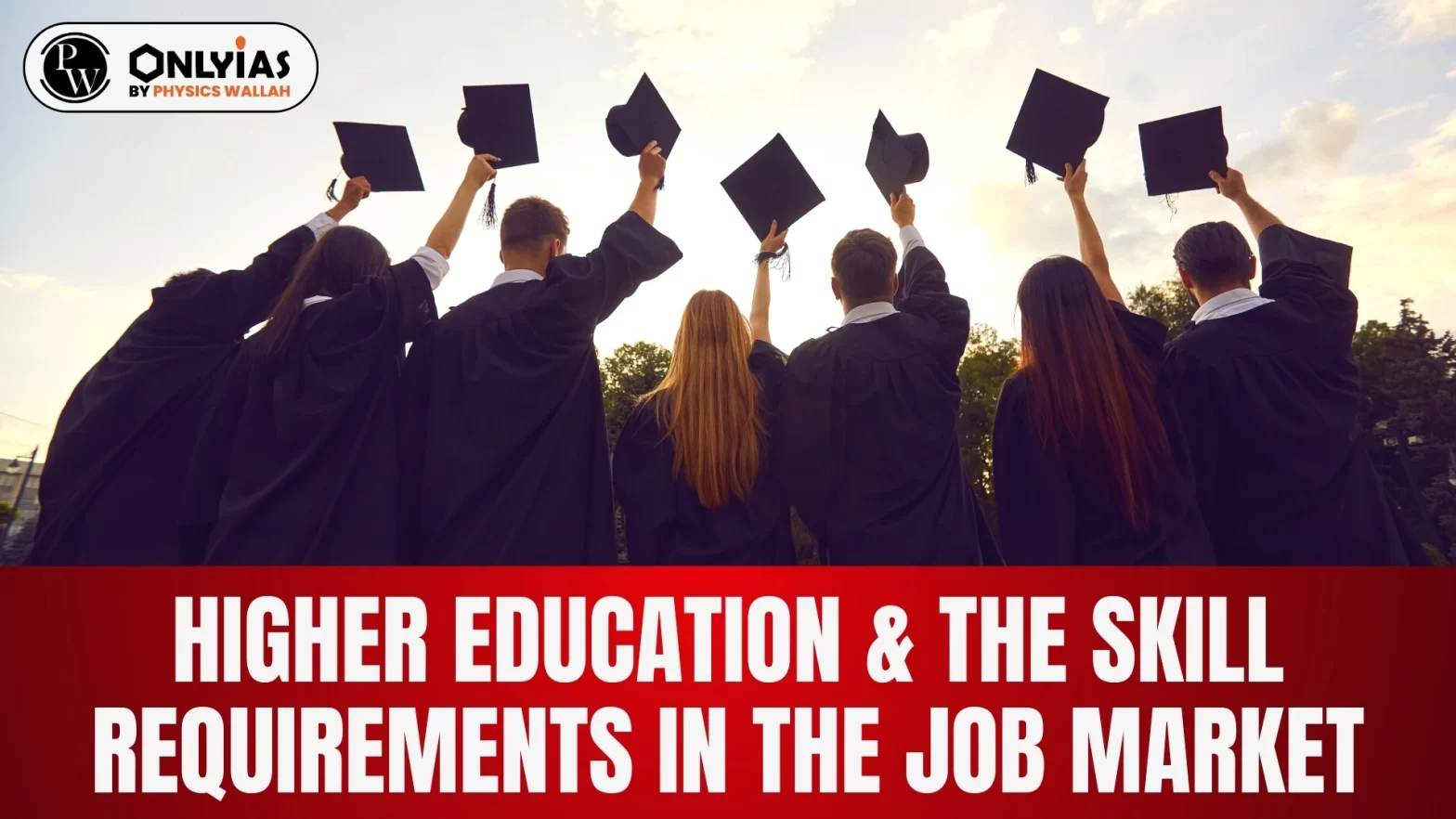Context: This editorial is based on the news “Is higher education out of touch with the skill requirements in the job market?” which was published in the Hindu. According to the Periodic Labour Force Survey, the unemployment rate among graduates in India is higher than in many other developing countries.
Challenge Of Enrollment In Higher Education
- A vast majority of the country’s youth don’t manage to enter higher education.
- Higher education enrolment rates are still about 27% (18-23-year-olds).
- Concerning Statistics: In 2012, the unemployment rate among graduates was 20%, which rises to 34% in 2021. Among postgraduates, it used to be 18% in 2012 and doubled to nearly 37%.
Quality Concerns in Private Colleges
- The massification of higher education between 2006 and 2018. The number of private colleges grew and quality deteriorated and just became exam-giving institutions.
- Issue of Regulation: State governments, the Central government and the University Grants Commission did not have the capacity to regulate these increasing private institutions.
- Industrial Training Institutes (ITI) and Polytechnic Colleges: ITIs have grown in number as affiliated colleges have grown in number at a phenomenal rate and the issue of quality arises.
Impact of Online Education
- Learning Loss: Online learning did cause learning losses. Ed-tech companies are downsizing as students themselves realize that such companies wouldn’t serve their purpose.
- Quality Concern: Students who enrolled in college during the pandemic have now graduated and there are concerns over their employability and the quality of online education.
The Challenge of Job Creation
- No Sufficient Jobs: The economy is not creating sufficient jobs and hence many graduates are leaving the country in search of better opportunities abroad.
- Agriculture is the largest employment-providing sector, however in India, it has not become high tech, so graduates don’t join agricultural professions.
- Lack of Knowledge: Even in the services sector, the jobs that are being created require a high level of knowledge. But most jobs, such as delivery boys, are not preferred jobs for educated people although in the absence of jobs, they might be found in these jobs.
The Challenge of Research and Development
- Less Expenditure: The Research and Development (R&D) expenditure as a proportion of GDP in India is only 0.7%, while in Korea, it is 4%.
- Parity in Institutions R&D Expenditure: Globally, the private corporate sector accounts for about 70% of total R&D expenditure and only 30% comes from the government. But, in India, the public sector accounts for some 70% of the total R&D expenditure and the private sector’s contribution is relatively small.
- The public research institutions do not have the mechanism of translating their research output into actual usable products and processes which can help people.
The Challenge of Government Policies For Higher Education
- Lack of Industrial Policy or a Manufacturing Strategy in India.
- Impact of the 2020 National Education Policy: There is no substantive change in the education system on the ground. Instead, it has led to controversies and confusion about what higher education institutions should do.
- Example: On admitting students, the National Testing Agency, the Central University Entrance Test and ‘One Nation, One Examination’ have led to confusion in the System.
- The policy doesn’t talk about specific equity actions.
- Example: The representation of Women, Scheduled Castes, Muslims and Scheduled Tribes is very less as compared to their share in the population in the country.
What Measures Can be Taken to Improve the Quality of Higher Education?
- Improvement of Quality: To divert students at the end of Class 10 and Class 12 away from higher education towards ITIs and better vocational training institutions and improve their quality by engaging with industry and employers.
- Practicable Research: To create institutions that convert patents or research scientific research papers into products and processes.
- More funding to the Universities and industry will have to be associated with this.
- The intervention Strategies: These are required for promoting inclusiveness and equities for different sets of people need to be different.
Must Read: Transforming Indian Higher Education To Get Globally Competitive
Conclusion
Higher education institutions are essentially knowledge institutions. When they create new knowledge, it leads to the development of new technologies, the possibilities of new businesses, innovation, entrepreneurship, and start-ups. It should be the responsibility of the government to take appropriate actions in enhancing the quality of Higher Education, which ultimately would enhance the future of India.
![]() 5 Jan 2024
5 Jan 2024

